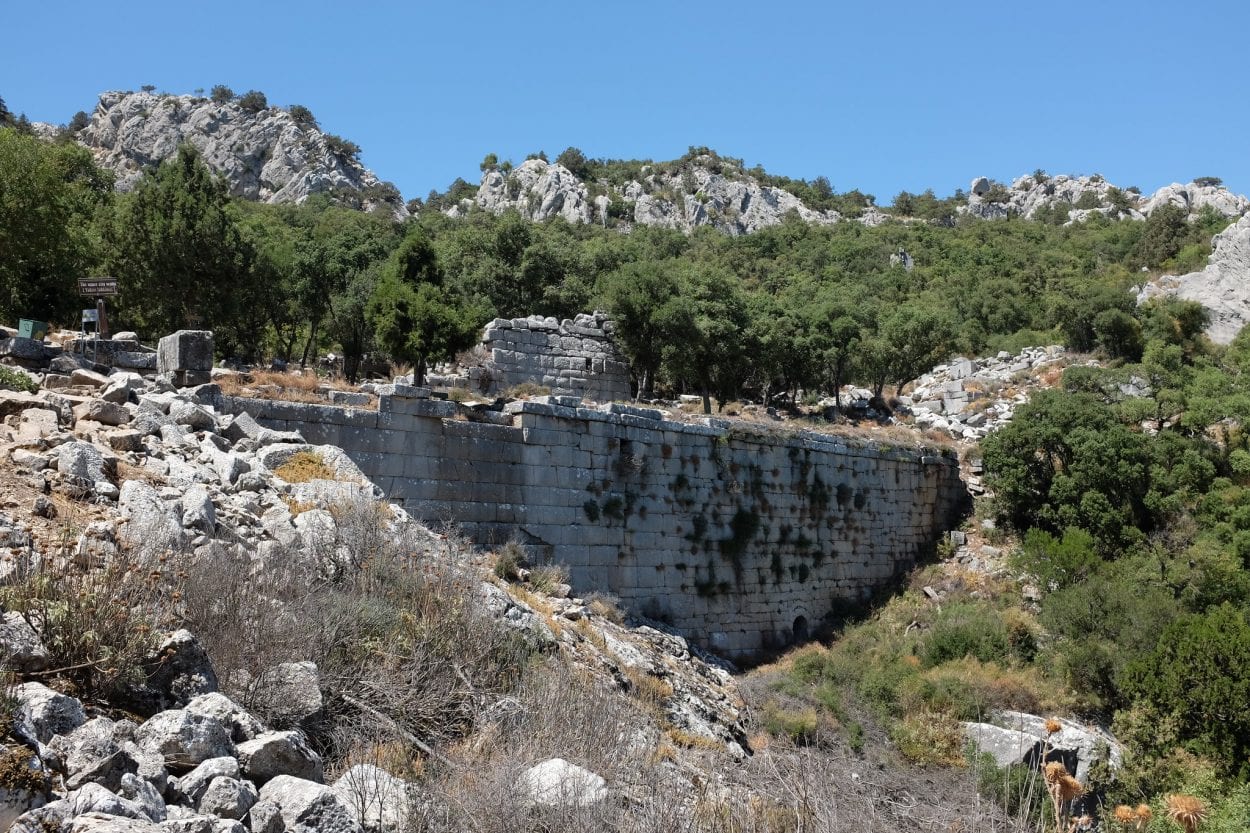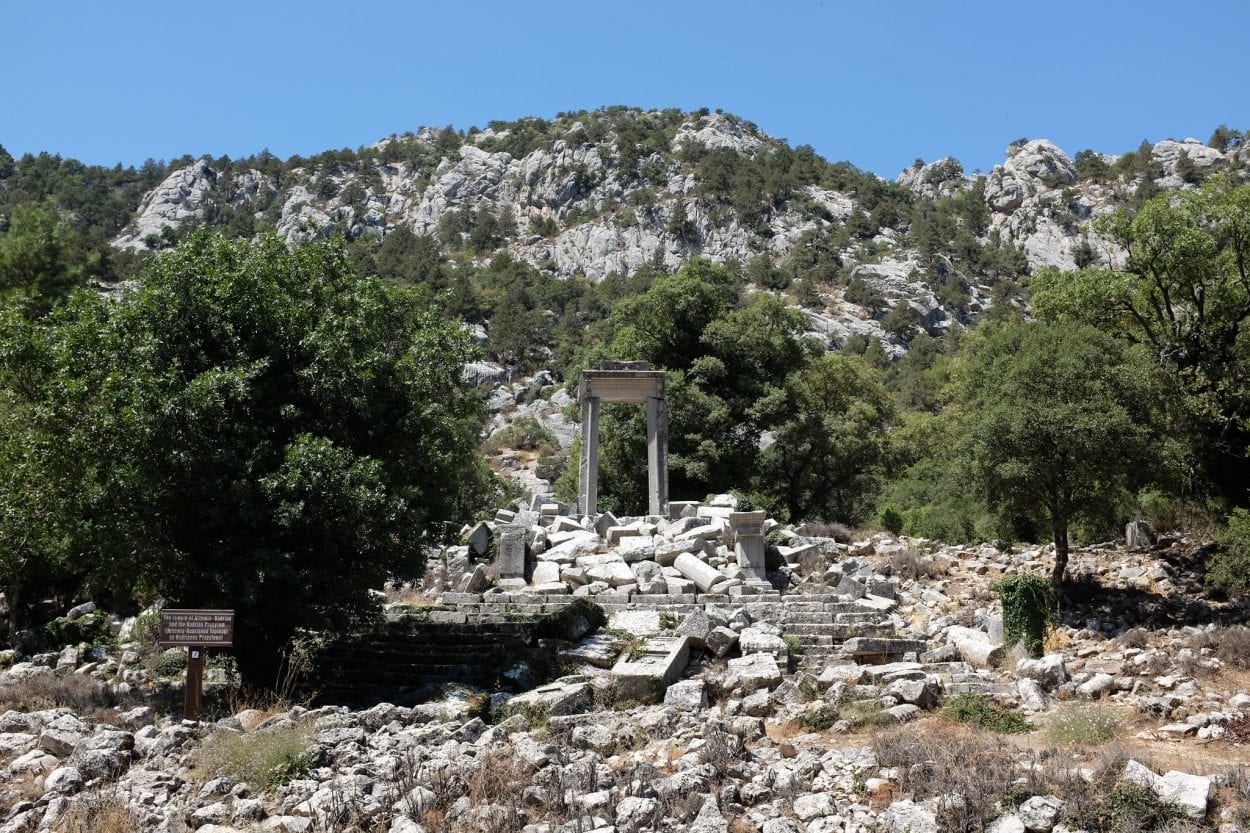Termessos was a fortified city, founded by Pamphylian tribes called the Solymi (also called the Solims) near the peak of the Solymos (Güllük Dağı) mountain, in the Taurus mountain range in present-day Turkey.
According to the Greek philosopher and historian Strabo, the Solymi derived their name from Solymeus, an Anatolian god who was later identified with Zeus, giving rise to the cult of Zeus Solymeus.
Little is known about the historical context of Termessos, but the earliest encounter with the city comes from text called the Anabis of Alexander by Arrian of Nicomedia, who describes the conquests of Alexander the Great. In the Anabis, Alexander surrounded Termessos in 333 BC, where Alexander likened the city to an “eagle’s nest”, failing to take the city.
An inscription found in the Lycian city of Araxa gives the next mention of Termessos, citing a war with the league of Lycian cities in the 2nd century BC, and again in conflict with its Pisidian neighbour Isinda.

In 71 BC, Termessos allied with Rome and was granted independent status, ensuring the freedoms of its citizens to have autonomy (documented in the minting of coins which bear the title “Autonomous”).
Rome’s influence is apparent within the city’s monuments that show elements of Greek and Roman architectural features, and with the construction of a triumphal arch in dedication to the Emperor Hadrian.

At its peak, Termessos had an estimated population of 150,000 inhabitants, with the city consisting of a royal palace, a gymnasium, an odeon, six temples of varying sizes, an agora, a bouleuterion (council house), and a theatre with a seating capacity of some 4-5,000 spectators. To the south, west and north of the city, mostly within the city walls, there are large cemeteries containing rock-cut tombs.
Termessos, after a gradual decline, was abandoned in the 5th century AD, when an earthquake destroyed the primary aqueduct cutting off vital water to the inhabitants.
Header Image Credit : Alexander van Loon – CC BY-SA 2.0





